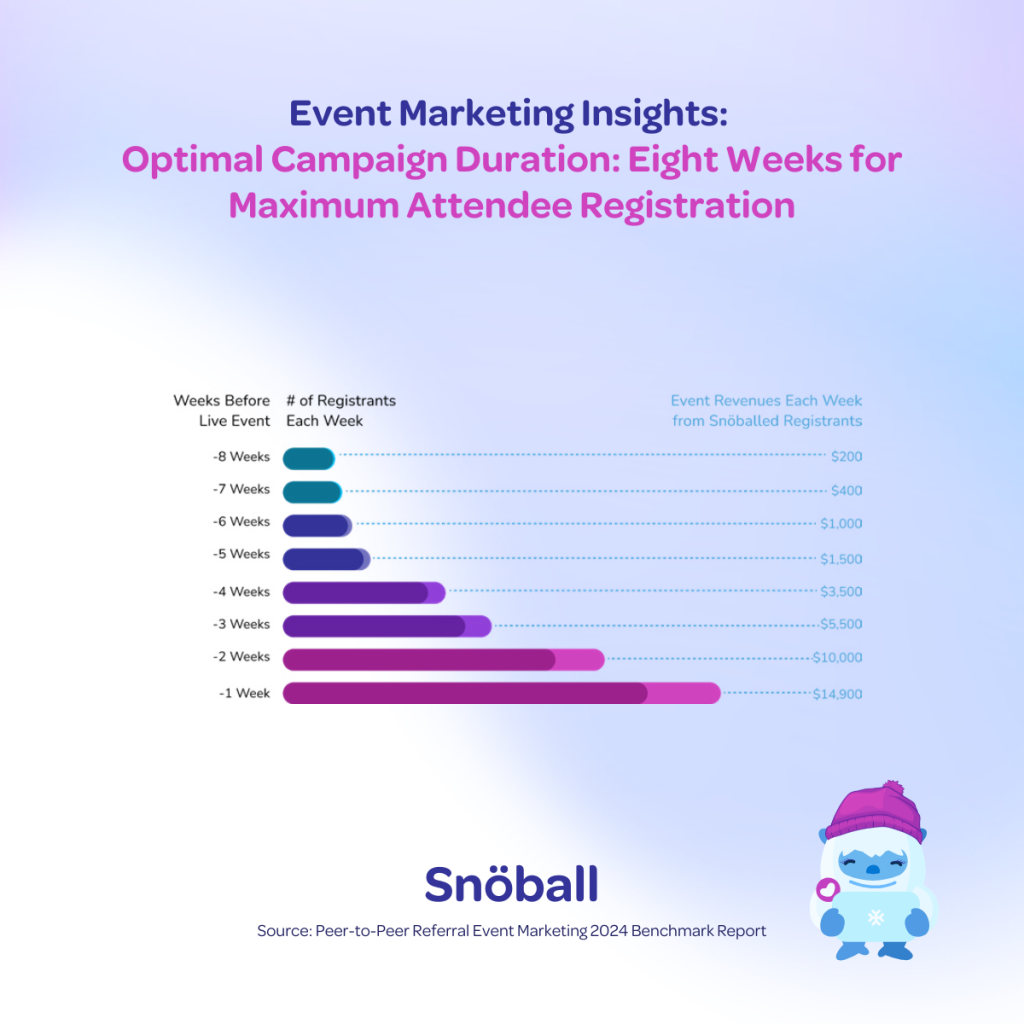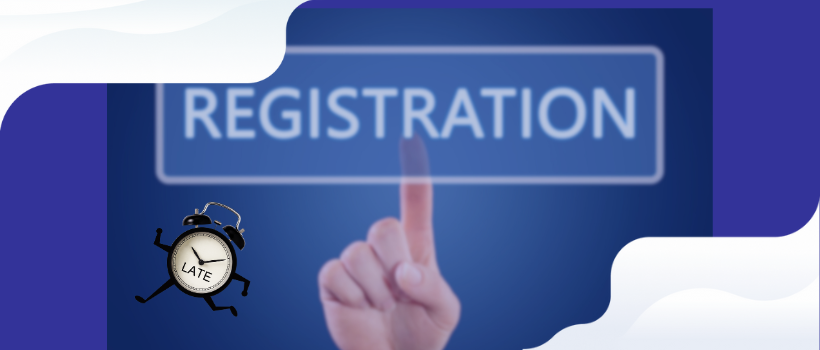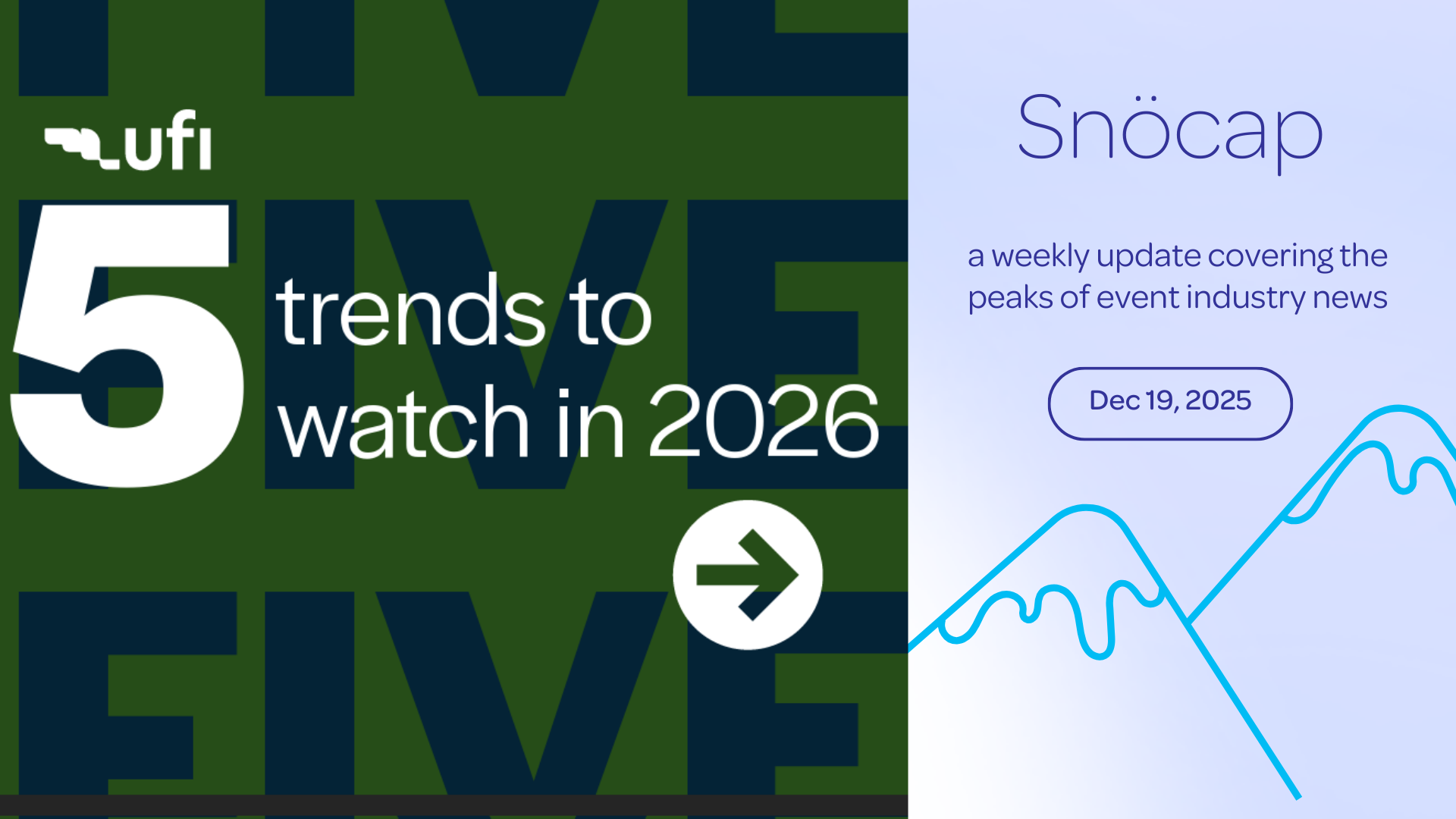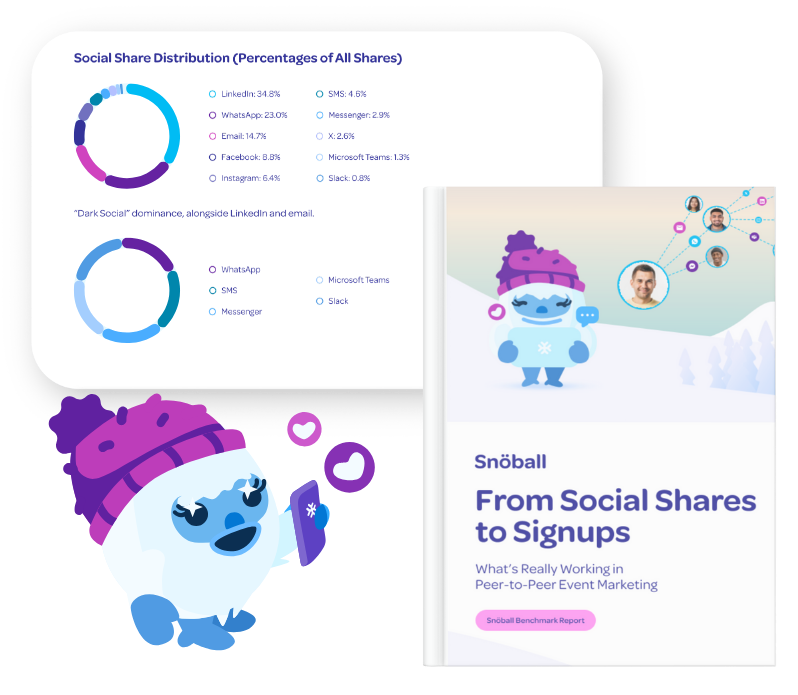Is your event’s biggest surge happening three days too late?
You’ve finalized your run of show, briefed the AV team, and put finishing touches on the swag bags. But when you refresh the registration dashboard… 42% of anticipated attendees still haven’t signed up, and it’s one of the most frustrating event registration trends we’re seeing in 2024.
Sound familiar?
You’re not alone.
According to Maritz’s Registration Insights Report 2024, 45% of in-person B2B event registrations now happen within four weeks of the show and 22% wait until the final week to register, a stark shift in event registration trends.
Attendees are weighing budgets, approvals, travel costs, and calendars. Meanwhile, organizers are stuck figuring out catering counts, sponsor promises, and hotel blocks. Understandably for the them it can be tricky to work out all of the details on their end so that they can attend. But for you (the sleep-deprived organizer/marketer who’s been living on coffee and wishful thinking) it can be equally tricky.
That’s of course because late registrations aren’t just a scheduling quirk. They’re a ripple effect that messes with your budgeting, disrupts your planning, and impacts the experience for everyone involved — including those last-minute attendees themselves (it’s a vicious cycle).
So to better understand this phenomena, let’s dig into what causes this trend, how it bites your bottom line, and what you can actually do to fix it.
Here’s what we will cover:
- Why late registrations happen?
- How late sign-ups become a huge headache
- How can you get attendees to register earlier?
- The real fix: a well planned peer-to-peer marketing campaign
- What should you measure to know your fix is working?
Why do late registrations happen?
Are attendees just procrastinating?
Not quite. Blaming it on laziness is too easy (and inaccurate). Attendee behavior has shifted post-2020, especially in B2B events, causing a major shift in attendee acquisition strategies and event marketing tactics.Here’s what’s behind the curtain:
1. Decision overload and FOMO fatigue
There are more events than ever before, clustered in spring and fall. Attendees feel like every week brings a new “must-attend” email. Instead of picking early, they delay their sign-ups and wait to see which event their colleagues choose or which keynote lands the biggest punch.
2. Budget bottlenecks
Q4 and Q1 are budget limbo for many organizations. Even if someone wants to register early, their finance team might still be fiddling with spreadsheets. Add multi-level approvals, and early commitment starts to feel like wishful thinking.
3. Calendar chaos
Personal and professional calendars are in flux. From last-minute client meetings to family trips, attendees hold off to avoid double-booking. Waiting feels safer than committing too soon.
4. Too little information, too late
Event organizers can delay releasing final agendas, speaker lineups, or session tracks. And let’s be honest: “More details coming soon” isn’t much of a motivator. Attendees hesitate when value isn’t clearly communicated upfront which can dramatically impact event registration rates.
5. Discount conditioning
Some attendees have been trained by years of flash sales and last-minute promo codes. They wait … not because they’re unsure, but because they’re expecting the price to drop.
Stat check: 27% of repeat attendees register early, compared to just 17% of new attendees. First-timers tend to wait for social proof, speaker reveals, or peer nudges. (Maritz, 2024)
| TL;DR: Why Do Late Registrations Happen? |
|---|
|
How late sign-ups become a huge headache
Last-minute registrations can make all your event planning awry. All of a sudden, you need to ensure scores of new attendees are accommodated while navigating the logistics.
Can you trust your revenue forecast?
Let’s say your early bird deadline passes, and only 30% of your target shows up. Do you panic? Do you slash prices? Do you throw another $5,000 at ads?
Late event registrations make it harder to accurately forecast revenue and improve event planning outcomes like::
- Locking in venue contracts confidently
- Forecasting revenue for sponsors
- Planning inventory for merch or materials
Worse, when those last-minute signups finally do trickle in, they can demand the same special treatment – VIP upgrades, group discounts, or custom invoices — when you least have the bandwidth to handle them.
What happens behind the scenes?
When 4 out of 10 attendees register at the last minute, planners scramble. You face:
- Over-ordering (food, badges, bags) or running short
- Volunteer and staff confusion
- Overflow sessions with no room reshuffling options
All while trying to smile for speaker selfies and answer your inbox.
Do attendees even enjoy the experience?
Late registrants tend to get:
- Worse flight and hotel options
- Less time to explore agendas or pick sessions
- Minimal opportunity to network in advance
| TL;DR: How Late Sign-ups Become a Huge Headache |
|---|
|
How can you get attendees to register earlier?
Smart marketers are turning the tables on late event registrations with better incentives and stronger event marketing strategies , not by begging or blasting more ads, but by tweaking incentives, tapping into peer power, and making value visible sooner.
How do you create urgency without yelling “last chance”?
- Add limited-time bonuses (VIP mixer invites, workshop access) that expire with the early bird date.
- Run real-time registration counters to show momentum, especially when your goal is to get attendees to register early without sounding desperate..
- Use FOMO reversal: “Here’s what you’ll miss if you wait.”
These strategies work better than standard countdown timers. They shift the question from “Should I register now?” to “Can I afford not to?”
What about peer pressure (the good kind)?
According to the CEIR Attendee Acquisition report, 67% of attendees register based on peer recommendations – far more than any email or ad.
This is where peer-to-peer marketing kicks in as one of the most effective attendee acquisition strategies to reduce last-minute event registrations. With platforms like Snöball, organizers activate attendees as influencers:
- Each registrant gets a personalized landing page and social sharing kit
- They can invite their network using prewritten content
- You can run gamified referral campaigns with tiered rewards for early sign-ups
Rather than marketing to attendees, you’re marketing with them.
And when someone sees their colleague or speaker already attending? That’s trust and influence money can’t buy.
Can pricing psychology actually shift the curve?
Yes — if you structure it properly:
- Use graduated pricing tiers, not just “early vs. regular”
- Visually display the pricing calendar so buyers see how rates change
- Offer group rates with flexible name swaps or invoices
People don’t just respond to discounts. They respond to clarity and perceived value and these simple changes can make a big impact when trying to reduce last-minute registrations and boost early sign-ups.
The real fix: a well planned peer-to-peer marketing campaign
There’s no one-size-fits-all fix, but a well-structured peer-to-peer strategy delivers results that are both scalable and sustainable. Here’s how to approach it:
- Leverage social proof early and often. Highlight confirmed attendees, share compelling statistics, and integrate “Who’s attending” widgets to build credibility and momentum from the outset.
- Launch referral campaigns 4–6 weeks in advance. Snöball’s peer-to-peer marketing campaigns maintain steady engagement and drive consistent registrations throughout the promotional window.
- Communicate value clearly and immediately. Every touchpoint — from your landing page to email workflows — should answer a prospective attendee’s key question: Why register now?
- Offer meaningful incentives beyond discounts. Early access, exclusive content, priority seating, and recognition perks are often more persuasive than generic price cuts.
- Automate reminders based on user behavior. Use intent signals like pricing tier changes or page visits to trigger timely, relevant follow-ups via email and retargeting ads.
Want to reduce late sign-ups? Learn how peer-to-peer campaigns drive earlier registrations with Snöball.
What should you measure to know your fix is working?
If you’re serious about improving event registration rates, track these 4 signals to know if your strategy is working.
- Registration velocity
Are you moving the curve forward? A 10–15% shift toward earlier signups means you’re on the right track. - Peer referral impact
How many attendees came in through invite links? That’s your peer power in action — and it should grow with every campaign. - NPS by registration date
Are early birds having a better experience than last-minuters? Track satisfaction by sign-up window to spot gaps you can fix. - Revenue timing
Are more dollars coming in earlier? Faster cash flow means your early-stage efforts are paying off.
Remember: you don’t need to fret over trying to register everyone six months in advance. Just nudge your audience into that 31–60 day sweet spot, where budgets, logistics, and value align.

| TL;DR: How to Get Attendees to Register Earlier |
|---|
|
Bottomline
Attendees are busy. Overwhelmed. Cautious. And constantly evaluating ROI.
If your event doesn’t feel urgent, they won’t act urgently.
But with smart psychology, peer influence, and the right tech stack, you can shift behavior without shouting.
The result?
Better cash flow.
Happier sponsors.
Less midnight dashboard refreshing.
Shifting this mindset is key to reducing late event registrations and improving overall attendee acquisition.





